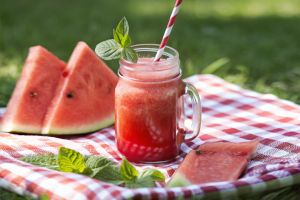A few days ago, while browsing a market in Sydney, I stumbled upon a fruit that looked like a pear but had a golden-yellow hue, giving off a delightful apple-like fragrance.
It was priced quite high, but I couldn't resist and bought a couple to try. As soon as I sliced it open, the air was filled with a wonderful fruit aroma.
But when I tasted it, I was shocked! The flesh was dry and had a weird texture – it was like chewing on the remains of pressed sugar cane, with just a hint of sweetness. It was nothing like what I expected. Something must've gone wrong in the way I ate it, so I did some research. Sure enough, I discovered the fruit was called “quince”, and it had an interesting history I couldn't wait to explore!
What is Quince?
The quince is an ancient fruit that looks a lot like a pear or apple, but it's often mistaken for something else. It's known by many names around the world, including "wood pear," "golden apple," and "wooden melon," while its actual name, "quince," is relatively unknown. It belongs to the rose family, which is also home to apples, pears, peaches, and strawberries. Quince's homeland is the region between the Caspian and Black Seas, particularly in the mountains of northern Turkey.
A Fruit with a Rich History
Quince is one of the oldest cultivated fruits, and its history dates back to ancient Mesopotamia. By 600 BC, Greek texts mentioned quince being used in weddings as a symbol of good fortune. Between 200 to 100 BC, Greeks began planting quince in Eastern Mediterranean regions. The Roman scholar Columella described it in the 1st century as the "sparrow apple," "golden apple," and "essential apple." This indicates that quince may have been the "apple" of ancient times before the modern apple took its place.
Quince's Journey through Time
In the 7th to 11th centuries, the prolonged conflicts between the Arabs and Byzantines led to an unexpected result: the migration of ingredients from East to West. During this time, quince made its way to Europe, where Charlemagne planted quince trees in his royal garden. Some historians even suggest that the fruit Eve bit into in the Garden of Eden wasn't an apple, but rather a quince or pomegranate. However, in Europe, quince wasn't widely loved, except in France. In many parts of Europe, it was only used for ornamental purposes.
The Magic of Cooking Quince
Here's the thing about quince: when you eat it raw, it's not great. It's dry and astringent, with very little sweetness or juiciness. But heat it up, and it transforms. The color changes from pale yellow to pink, and with enough cooking, it turns a rich reddish-brown. Once cooked, the quince becomes smooth and tender, losing its dry texture. The natural sweetness and tangy flavor emerge, and the fragrance fills the air. This transformation is what makes quince so special!
Quince in Traditional Cuisine
Quince has a distinctive, intense fragrance that combines apple, pear, vanilla, floral notes, and citrus – it's truly unique. This makes it perfect for making jams, desserts, and even savory dishes. In fact, quince's natural pectin content makes it ideal for creating jelly-like treats such as membrillo, a popular Spanish quince paste that's often paired with cheese. Traditional dishes in Turkey also feature quince, such as "olive oil sautéed quince" and "quince-stuffed meat."
Why Quince Matters Today
Today, quince is most commonly consumed in Turkey, which is also the world's largest producer of this fruit. Mediterranean countries in Europe, along with South American nations like Spain and Italy, also enjoy quince in their traditional meals. In France, quince is an essential part of the Christmas feast, especially in the form of quince jam.
So, next time you spot a golden, pear-like fruit in the market, don't just walk past it. Quince, or "golden apple," might surprise you with its flavor – especially when you cook it! It's a fruit with a rich history, and its unique taste can add a special touch to your dishes, from jams to savory meals. Have you ever tried quince, Lykkers? Let us know how you like to enjoy this ancient fruit!


